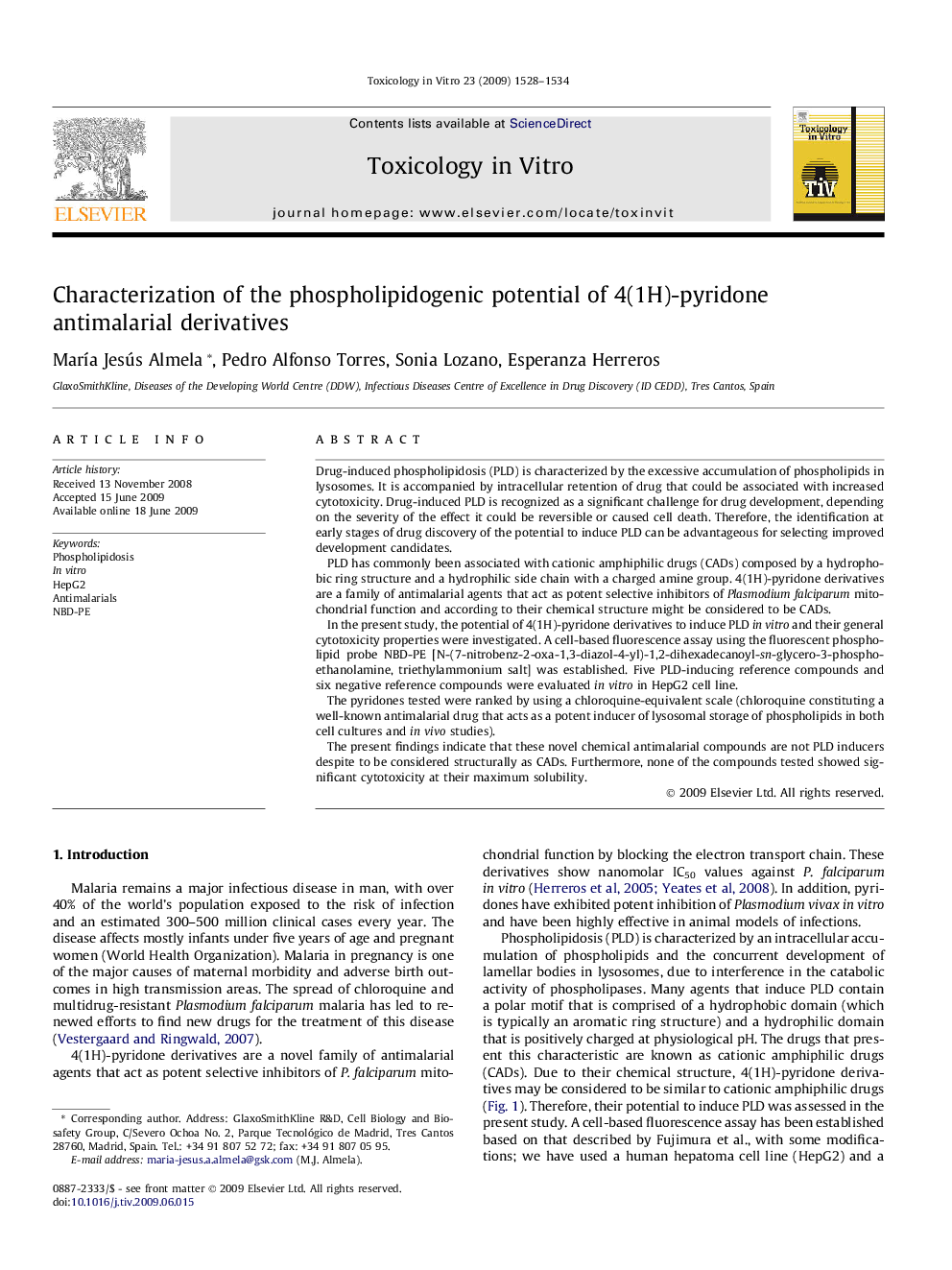| کد مقاله | کد نشریه | سال انتشار | مقاله انگلیسی | نسخه تمام متن |
|---|---|---|---|---|
| 2602644 | 1133791 | 2009 | 7 صفحه PDF | دانلود رایگان |

Drug-induced phospholipidosis (PLD) is characterized by the excessive accumulation of phospholipids in lysosomes. It is accompanied by intracellular retention of drug that could be associated with increased cytotoxicity. Drug-induced PLD is recognized as a significant challenge for drug development, depending on the severity of the effect it could be reversible or caused cell death. Therefore, the identification at early stages of drug discovery of the potential to induce PLD can be advantageous for selecting improved development candidates.PLD has commonly been associated with cationic amphiphilic drugs (CADs) composed by a hydrophobic ring structure and a hydrophilic side chain with a charged amine group. 4(1H)-pyridone derivatives are a family of antimalarial agents that act as potent selective inhibitors of Plasmodium falciparum mitochondrial function and according to their chemical structure might be considered to be CADs.In the present study, the potential of 4(1H)-pyridone derivatives to induce PLD in vitro and their general cytotoxicity properties were investigated. A cell-based fluorescence assay using the fluorescent phospholipid probe NBD-PE [N-(7-nitrobenz-2-oxa-1,3-diazol-4-yl)-1,2-dihexadecanoyl-sn-glycero-3-phosphoethanolamine, triethylammonium salt] was established. Five PLD-inducing reference compounds and six negative reference compounds were evaluated in vitro in HepG2 cell line.The pyridones tested were ranked by using a chloroquine-equivalent scale (chloroquine constituting a well-known antimalarial drug that acts as a potent inducer of lysosomal storage of phospholipids in both cell cultures and in vivo studies).The present findings indicate that these novel chemical antimalarial compounds are not PLD inducers despite to be considered structurally as CADs. Furthermore, none of the compounds tested showed significant cytotoxicity at their maximum solubility.
Journal: Toxicology in Vitro - Volume 23, Issue 8, December 2009, Pages 1528–1534